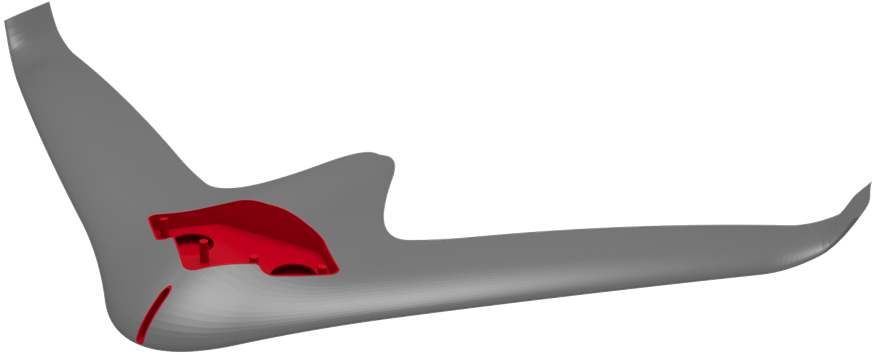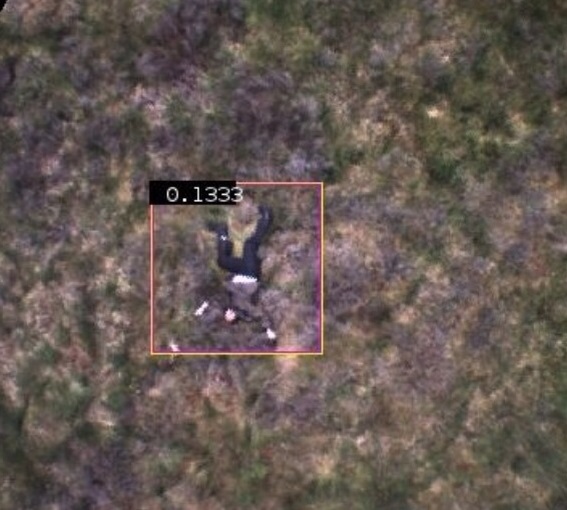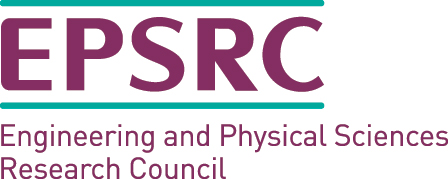Project Overview
Mosaic is a 4 year EPSRC funded project, which aims to develop control and planning algorithms for future applications of autonomous vehicles.

Concept fixed-wing UAV
Running from 2012 to 2016, the project will investigate solutions to problems that require multiple robotic platforms to act together, in a coordinated fashion, so that the best use is made of their combined resources to tackle the task in hand.
To achieve to this, the project is adopting a practical multidisciplinary approach, in which multiagent planning and coordination algorithms will be developed and deployed on real robotic platforms, including Autonomous Ground Vehicles (AGVs) and Unmanned Aerial Vehicles (UAVs). These platforms will operate under the principle of flexible autonomy, in which robotic platforms will operate in a fully autonomous manner when appropriate, while still being guided by human involvement when key operating decisions need to be made.
Application Domains
Important applications that require such coordinated action are likely to become common place within the next few decades. For example, increasing populations and global warming means that populated areas are now more frequently exposed to both natural and man made disasters. Moreover, as demonstrated by the Japanese earthquake in 2011, one type of disaster can often lead to another, each with its own consequences for a devastated region: earthquakes can not only lead to damaged infrastructure, but can also cause fires, tsunamis and flooding, which as witnessed at Fukushima, can in turn trigger power failure and nuclear disasters.

Person detection from on-board camera
To help fill this gap, recent advances in robotics have demonstrated a number of important advantages, which may make their application invaluable in future disasters. For example, small unmanned aircraft can be used to quickly and safely provide information about the situation on the ground, without the expense and risk associated with manned flight in hazardous environments. Likewise, on the ground, autonomous robots are capable of carrying out tasks and gathering information in places that are otherwise difficult to reach, or pose a significant danger to human life.
Challenges
In such situations, however, the full potential of robotics will only be met when multiple platforms can work together to solve problems in highly complex and uncertain environments. For example, it is clear that, by working together, multiple UAVs could perform an aerial survey in less time than one, and with least risk and expense compared to manned flight.
Any application of this type, involving teams of autonomous vehicles, poses four key challenges that we aim to address on the Mosaic project:
- Flexible Autonomy: While fully autonomous robots have the potential to carry out tasks more efficiently without human involvement, ultimate control must still lie in the hands of human operators. This will require the development of user interfaces and decision making software that will not only allow humans to issue commands at various levels of control, but also allow decisions to be delegated to the computer system when appropriate, and enable the computer system to explain its decisions to its human operators in a natural and understandable way.
- Planning under Uncertainty: Any real world robotic application requires decision making and planning in the presence of uncertainty, and in highly complex and dynamic environments. To operate under such conditions, autonomous vehicles must be guided by planning software that can reason effectively in the presence of uncertainty, by taking into account risk, and balancing the need to gather more information about a situation before acting, against the need to carry out primary mission objectives.
- Coordination: As in any system comprising multiple parts, multiple robots can act more effectively as a team rather than in isolation. This requires coordination and negotiation between robots, to decide which ones should be assigned to which tasks to ensure that their combined resources are used to their best advantage.
- Autonomous Control: Whether high level decisions are made autonomously, or by human operators, robotic vehicles need to maintain low-level control of their movements and stability at all times. This is particularly true of UAVs, which need to remain stable in the air while traveling at high speed in variable atmospheric conditions. This requires sophisticated control algorithms that can account for the physical constraints and forces operating on each platform in real time. On the Mosaic project, we plan to investigate the interplay between these low-level control operations and high-level decision making, so that decisions made at each level of abstraction take appropriate account of the objectives and constraints that come into play in each level.
Further information about these challenges, and how we plan to tackle them on the Mosaic project can be found in the research and publications sections of this website. These pages will be updated as the project progresses.


